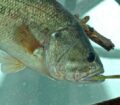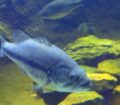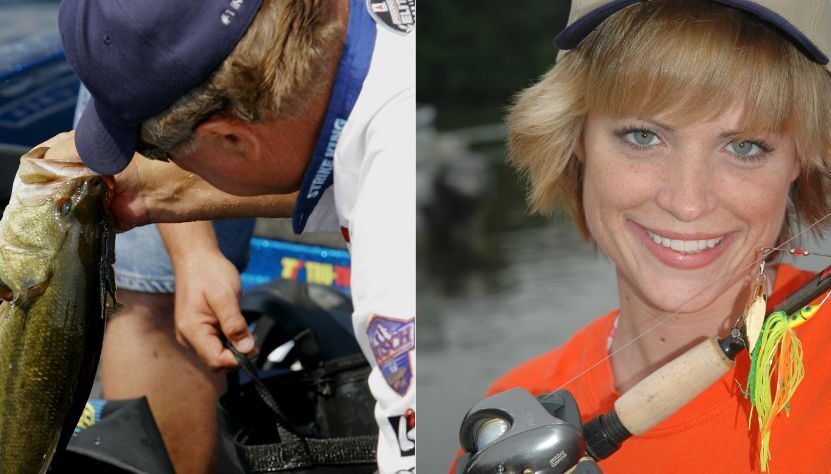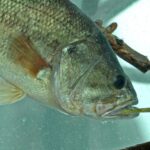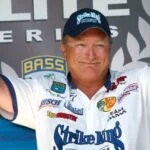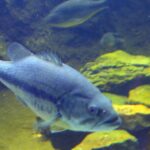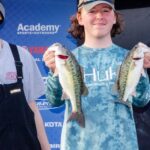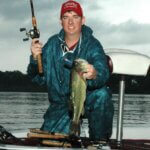Editor’s Note: Denny Brauer, originally of Camdenton, Missouri, and today a resident of Del Rio, Texas, on Lake Amistad in southern Texas, is one of the most successful tournament bass fishermen ever. He’s earned over $2.5 million in tournament winnings and has won a Bassmaster Classic, the title of Bass Angler of the Year, the title of FLW Angler of the Year, and featured on the Wheaties cereal box. Brauer is known as one of the best flippers ever. “I flip because I want to fish spots most bass fishermen won’t fish,” Brauer says. “I fish to win every tournament I enter, and fishing thick cover with big baits gives me the greatest odds to catch big bass and win tournaments.” But Brauer also flips tubes, creature baits, and many other lures to catch bass. This week, we’ll learn how Brauer chooses which lures to fish when.
Question: Denny, how do you decide on the size of the spinner bait you’ll fish, the size and the color of the blades, the color of the skirt, and if you’ll use a trailer, the type of trailer you’ll use? There are so many different types, sizes, and colors of spinner baits that an angler can become confused about when he should use the lure when mentioning the word spinner bait.
Brauer: I particularly like two spinner baits – Strike King’s Burner and Bottom Dweller. So, I see how you can get confused when deciding which spinner bait to use at certain times of the year under specific conditions. But don’t feel like you’re the only one who feels this way. Sometimes, I get a little confused about which spinner bait to choose. I keep my spinner-bait choices reasonably basic. I base my spinner bait selection on water color, water temperature, the type of cover I’ll be fishing, and how fast I want the spinner bait to run. Here are some suggestions for how to make effective spinner-bait selections.
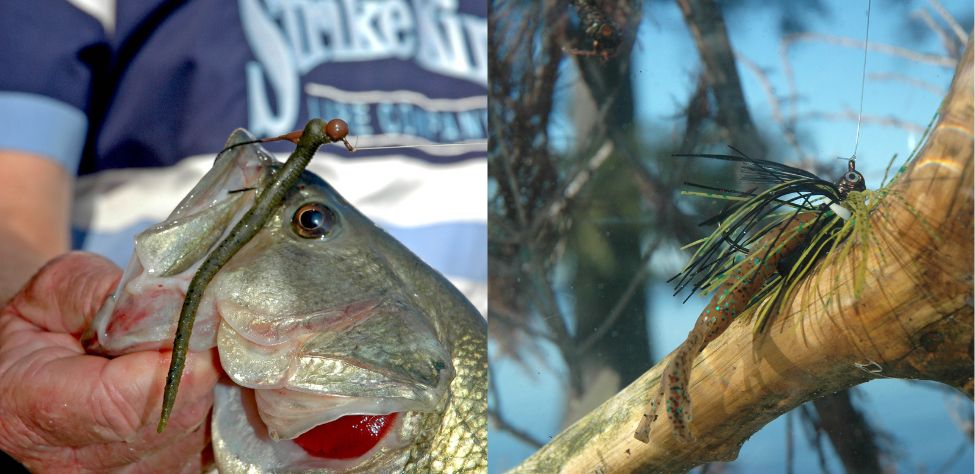
- The colder the water you’re fishing, you probably will need to use a Colorado blade combination on your spinner bait.
- I’ll choose Colorado or Indiana blades in dirty water because they disturb more water than a willow-leaf blade.
- I prefer a Colorado willow-leaf blade combination if I’m fishing a spinner bait slowly through the grass.
- I’ll use a gold-colored willow-leaf blade on the back of my spinner bait to give the bait some flash if I’m fishing fairly-stained water.
- I’ll use double-willow-leaf blade combinations to move the spinner bait fast.
- I’ll fish a double willow-leaf blade combination because I can make those blades dance and make different motions that look like shad if I see bass busting the surface and feeding on shad.
After determining which blades you need, you must start considering the weight of the spinner bait you select. Manufacturers make spinner baits that run in water from 1- to 20-feet deep or more. That Bottom Dweller will get down deep and keep the blades turning while you’re fishing deep.
So, here’s the way I make my spinner-bait choices. When I open my spinner bait box to choose the spinner bait, I’ll fish right then; the first thing I do is look at the watercolor, which will tell me the color skirt I should choose and the color and the type of blade I need. For instance, I’ll have a white or a chartreuse skirt in dirty water, and I’ll probably lean more toward gold-colored blades. I’ll choose a more translucent skirt and nickel-colored blades in clear water.
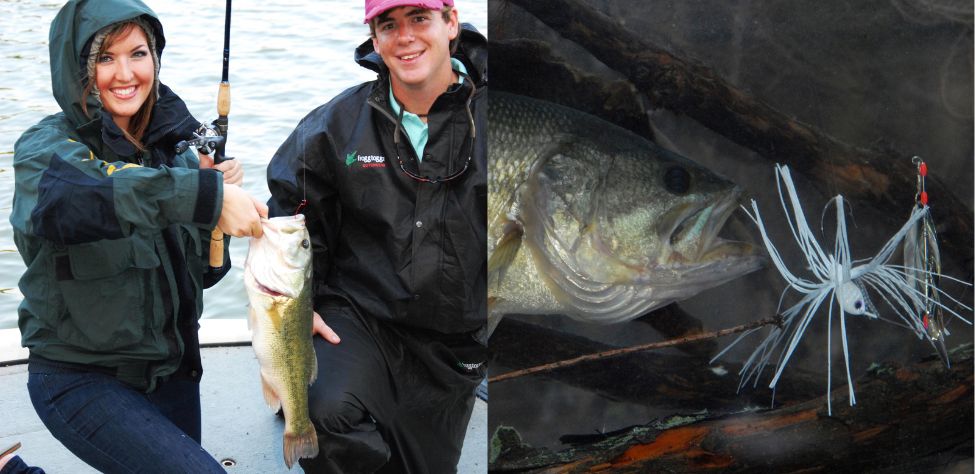
Next, I look at the type of cover where I’ll be fishing the spinner bait, which tells me the weight of the spinner bait I need. If you’ve got cold weather, you’ll need a spinner bait that moves slowly so that you may choose a 3/8-ounce rather than a 1/2-ounce spinner bait. If you have warm weather, you may choose a 1/2-ounce spinner bait to retrieve it faster.
The bottom line is you must set up a specific tackle box as your spinner-bait box. You must look at the spinner bait as a tool for different fishing situations. You need to set up your spinner-bait box to have various types of spinner baits in different colors, weights, and blade combinations for any type of water, weather, and cover situation you may fish. This way, you’re not switching blades, skirts, and sizes of spinner baits in the boat when the conditions change or when you go to another lake. Most bass fishermen won’t go fishing with only one crankbait or one size and color of plastic worm.
You must look at your spinner baits like your soft-plastic lures and crankbaits. Remember, spinner baits are set up for different fishing conditions, so have at least two or three for any type of fishing condition you may encounter.
Looking for more content? Check out our YouTube channel and watch “Smallmouth Bass Arent the Only Fish You Can Catch in a Tailrace with Live Bait” with Brian Barton” with Brian Barton” by John E. Phillips.
Expert Guidebooks on Bass Fishing: Best Sellers

If you want to become the best you can be, find someone who’s already become the best at what you want to do and follow his or her instructions. This is what I’ve done in my new book, Bass Pros’ Season by Season Tactics.
In this book, I’ve chosen some of the best bass fishermen to give you advice on how to find and catch bass during each period of a bass fish’s life, including professionals like Kevin VanDam, Denny Brauer, David Fritts, Rick Clunn, Larry Nixon, George Cochran, Mark Davis, Woo Daves, Gary Klein, Davy Hite, Michael Iaconelli, Skeet Reese, Mark Rose, and Shaw Grigsby.
My hope is that this book will help you find and catch more bass at every time of the year and each day you’re on the water. The men included in this book are some of the best mentors I know of for successful bass fishing anywhere in the nation.
VERSIONS: AUDIBLE & PRINT
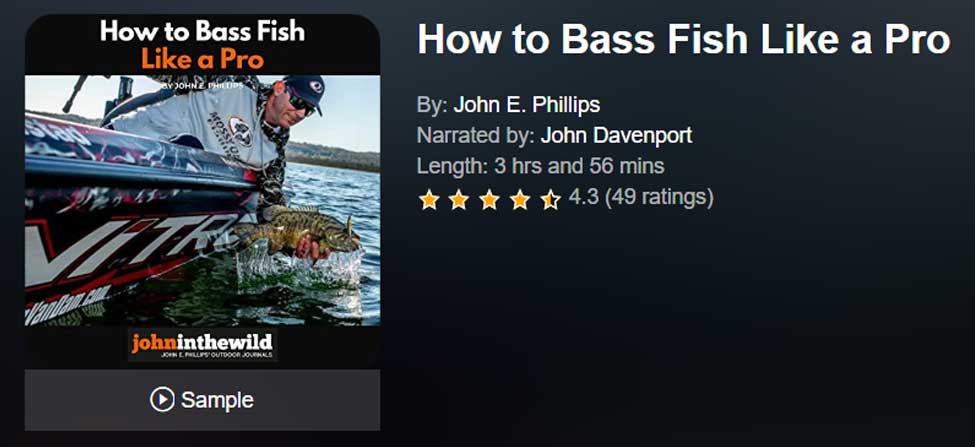
How to Bass Fish Like a Pro
If you could sit down and interview some of the best pro bass fishermen in the world, what would you want them to tell you to help you improve your bass fishing skills?
In this book, How to Bass Fish Like a Pro, Kevin VanDam explains how he catches bass consistently, and how he fishes all 12 months of the year. In the bonus chapters, he will tell you how to fish for hot-weather bass.
Denny Brauer will tell you the ways he hates to fish, how he picks the best fishing lures for different water and weather conditions, and will give you his best fishing tips for hot weather. In Brauer’s bonus chapters, he’ll teach you when to flip a jig, a tube, or a creature bait and tell you his three tips for how to be a better fisherman.
Mark Davis, in Chapter 3 of the book, explains his five secrets to becoming a better bass fisherman, how to turn your bass fishing around to the positive side, and how to catch hot-weather bass. In the bonus chapter, you’ll get six different interviews with Davis, where he tells you: three tips for becoming a better bass fisherman; his three favorite bass lures; and how to keep a big bass on the line and get it to the boat.
James Niggemeyer tells you how to become a bass pro. He also tells you how to catch bass when the weather sizzles. In Niggemeyer’s bonus chapter, he explains how to move from being a bass-club fisherman up to being a pro.
Mark Rose will explain his five favorite go-to bass lures, and how to catch bass in the middle of the summer.
In this book, you’ll hear from top-performing pro fishermen about how they catch big bass consistently, and what they do to win millions of dollars as professional bass fishermen.
VERSIONS: AUDIBLE, KINDLE & PRINT
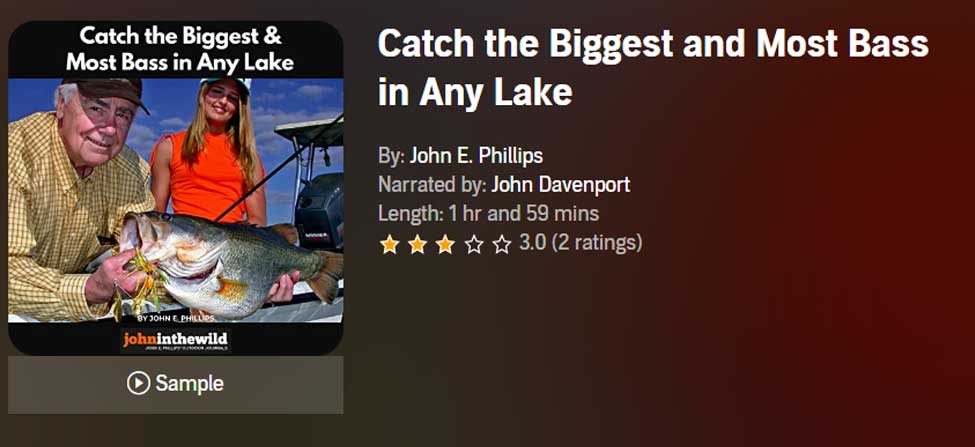
Catch the Biggest and Most Bass in Any Lake
If you were having open-heart surgery at the hospital, you’d want the best doctor with the most experience and the latest equipment and techniques that money could buy to do your operation. You’d study these doctors’ credentials to learn who was the best.
This is the same type of research that author John E. Phillips has done with the best bass fishermen in the nation to solve the problem of how to find and catch the biggest and the most bass in any body of water that he fishes.
This is the same type of research that author John E. Phillips has done with the best bass fishermen in the nation to solve the problem of how to find and catch the biggest and the most bass in any body of water that he fishes.
In this book, you’ll hear about the techniques, tips, baits, lures, and tackle that 18 of the nation’s best professional fishermen use to support their families by winning bass tournaments and catching the most and the biggest bass they can in every tournament they fish.
Most of these anglers are Bassmaster Classic winners, Megabucks winners, Angler-of-the-Year and FLW Tour winners – like Rick Clunn, Kevin VanDam, George Cochran, Mark Davis, Paul Elias, Skeet Reese, Larry Nixon, Hank Parker, Ken Cook, Denny Brauer, Alton Jones, and Jay Yelas.
Also, every serious bass fisherman should know Timmy Horton, Mark Rose, Randy Dearman, Harold Allen, Mike Wurm, and Shaw Grigsby, men whose tactics you’ll find in this book. To learn how to fish for bass and change your bass-fishing trips from fishing trips to catching trips, this book is a must-have.
VERSIONS: AUDIBLE, KINDLE & PRINT
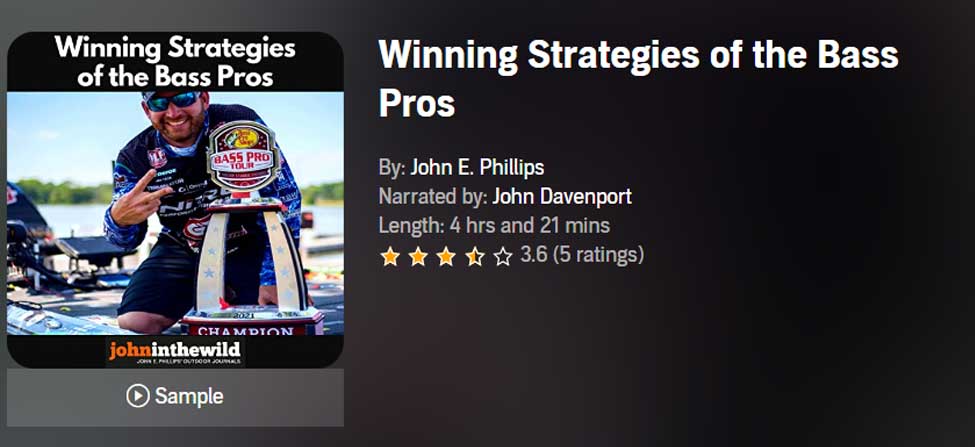
Winning Strategies of the Bass Pros
I learned many years ago if you want to be the best you can be, then you need to learn from the best – particularly when you want to be the best bass fisherman possible. That’s why I’ve written Winning Strategies of the Bass Pros about 11 top bassers.
If you’re wondering at what age you can start learning about bass fishing, you’ll see in the first two chapters about two young men who have come up through the ranks of collegiate bass tournaments – Jordan Lee, who won the Bassmaster Classic in 2017, and Dustin Connell, who won $100,000 in a B.A.S.S. Elite Series tournament in Mississippi in 2017. Top-name pros on both the B.A.S.S. circuit and the FLW circuit are in this book, including Kevin VanDam, Jay Yelas, George Cochran, Rick Clunn, Larry Nixon, Woo Daves, Randy Howell, Scott Canterbury, and Gary Klein.
VERSIONS: AUDIBLE, KINDLE & PRINT
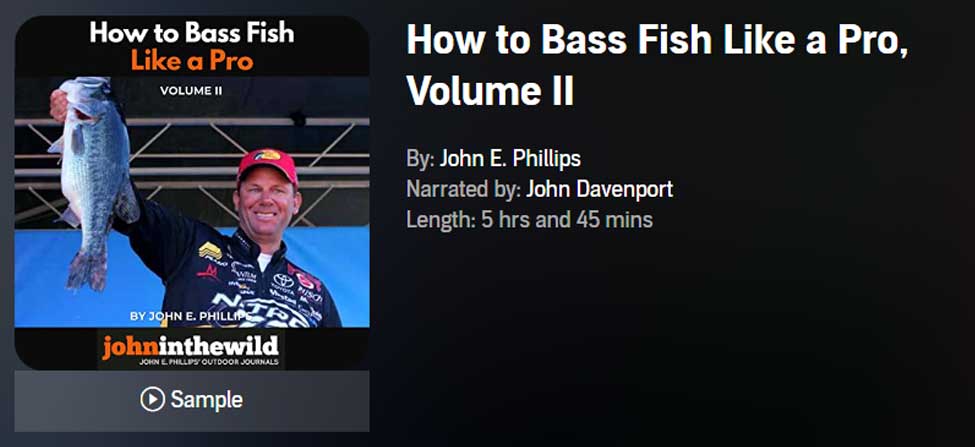
In How to Bass Fish Like a Pro, Volume II, you’ll learn tips and tactics from 21+ Bassmaster Classic winners, two Major League Fishing champions, and 20+ Bassmaster Anglers of the Year about some of the dramatic changes in bass fishing, like:
Depth Finders: You need the latest and greatest depth finders available, since they’re the brains of a bass boat with maps, GPS, side scanning, down scanning, and forward scanning features that enable you to see underwater structures and fish 100-feet away with a 360-degree view. Today’s competitive bass anglers may have four or five depth finders located on the consoles and the bows of their boats.
Other Changes in Equipment: Power fishing for bass using heavy line and rods, big baits, and bait-casting reels that resemble winches have given way to finesse fishing and new techniques like fishing the Ned Rig, the Neko Rig, the Chicken Rig, and the Tokyo Rig on spinning tackle and line as small as 6-10 pounds.
The Growth in Youth and College Competitions for Bass: A young person can begin competition fishing as early as the second grade and continue throughout high school. After that, if the competitor qualifies, he/she may win a scholarship to fish on a college team that eventually may lead them to a professional bass-fishing career.
Changes in the Ways Anglers Bass Fish: Many of the most-consistent winners never pick-up their rods to fish during pre-fishing. Instead, they’ll idle across the water, dropping waypoints from their electronics in places where they’ve identified schools of bass holding. These contestants will have at least 50-250 locations, where they’ve pinpointed schools of bass before a tournament starts.
VERSIONS: AUDIBLE, KINDLE & PRINT
Tomorrow: Select a Big Worm for Bassing

